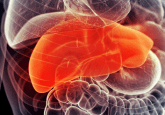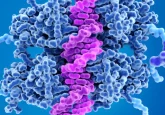Could we finally identify neurological disparities in adolescents with ADHD?

AI has unveiled fascinating insights into attention-deficit/hyperactivity disorder (ADHD), presenting a significant leap forward in understanding the neurological disparities in affected adolescents.
Yesterday, at the Radiological Society of North America (RSNA) annual meeting (26–30 November, 2023, IL, USA), researchers will share their findings, which highlight the urgent need for more objective ADHD diagnostics.
ADHD, a prevalent disorder affecting 5.7 million U.S. children and adolescents, is characterized by symptoms of impulsivity, inattention and hyperactivity that often interfere with development or functioning in society.
Although prompt diagnosis is crucial to managing the condition, subjective assessments often pose challenges to early interventions, meaning there is a critical gap in current diagnostic methods and a pressing need for more objective metrics.
Using a deep learning model, the research team analyzed brain diffusion-weighted imaging (DWI) MRI scans from adolescents in the multi-institutional Adolescent Brain Cognitive Development (ABCD) Study: a study comprising a range of data including brain imaging and clinical surveys from over 11,000 adolescents at 21 research sites in the US. This innovative approach, a first in ADHD research, overcame challenges faced by previous AI attempts, such as small sample sizes and the disorder’s complexity.
From the ABCD dataset, the team selected a smaller sample of 1,704 individuals, both with and without ADHD. They used the DWI scans to acquire fractional anisotropy (FA) values along 30 important white matter tracts in the brain. They then used 1,371 of these FA scores to train their deep learning model and assessed the model’s performance on the remaining 333 patients (193 diagnosed with ADHD and 140 controls).
Using the model, the researchers determined that the FA values in nine white matter tracts were significantly higher in the individuals with ADHD compared to individuals without ADHD.
Justin Huynh, a research specialist in the Department of Neuroradiology at the University of California, San Francisco (CA, USA), underlined the study’s unprecedented nature, stating, “These differences in MRI signatures in individuals with ADHD have never been seen before at this level of detail. In general, the abnormalities seen in the nine white matter tracts coincide with the symptoms of ADHD.”
Looking ahead, the researchers plan to expand their dataset using the ABCD study and employ additional AI models to enhance diagnostic accuracy.
Huynh is optimistic for the future, concluding, “This method provides a promising step towards finding imaging biomarkers that can be used to diagnose ADHD in a quantitative, objective diagnostic framework.” The study not only deepens our understanding of ADHD but also signals a transformative shift in diagnostic approaches.





